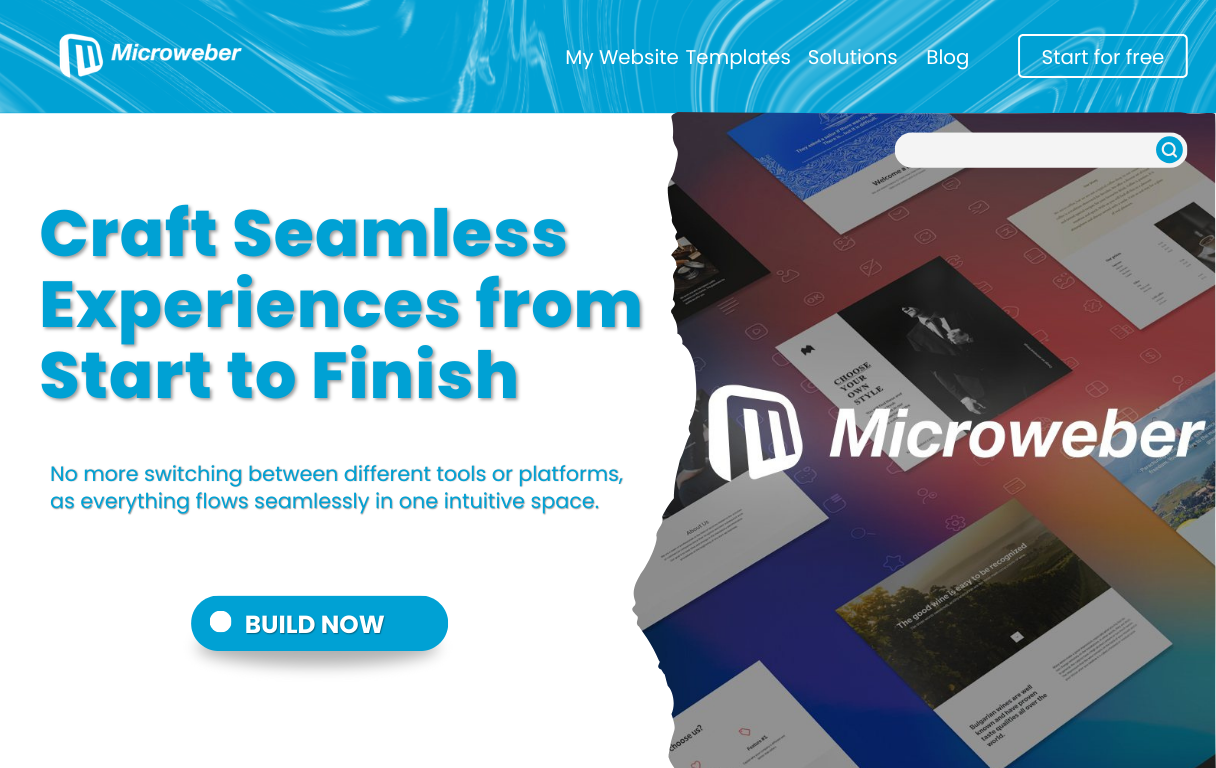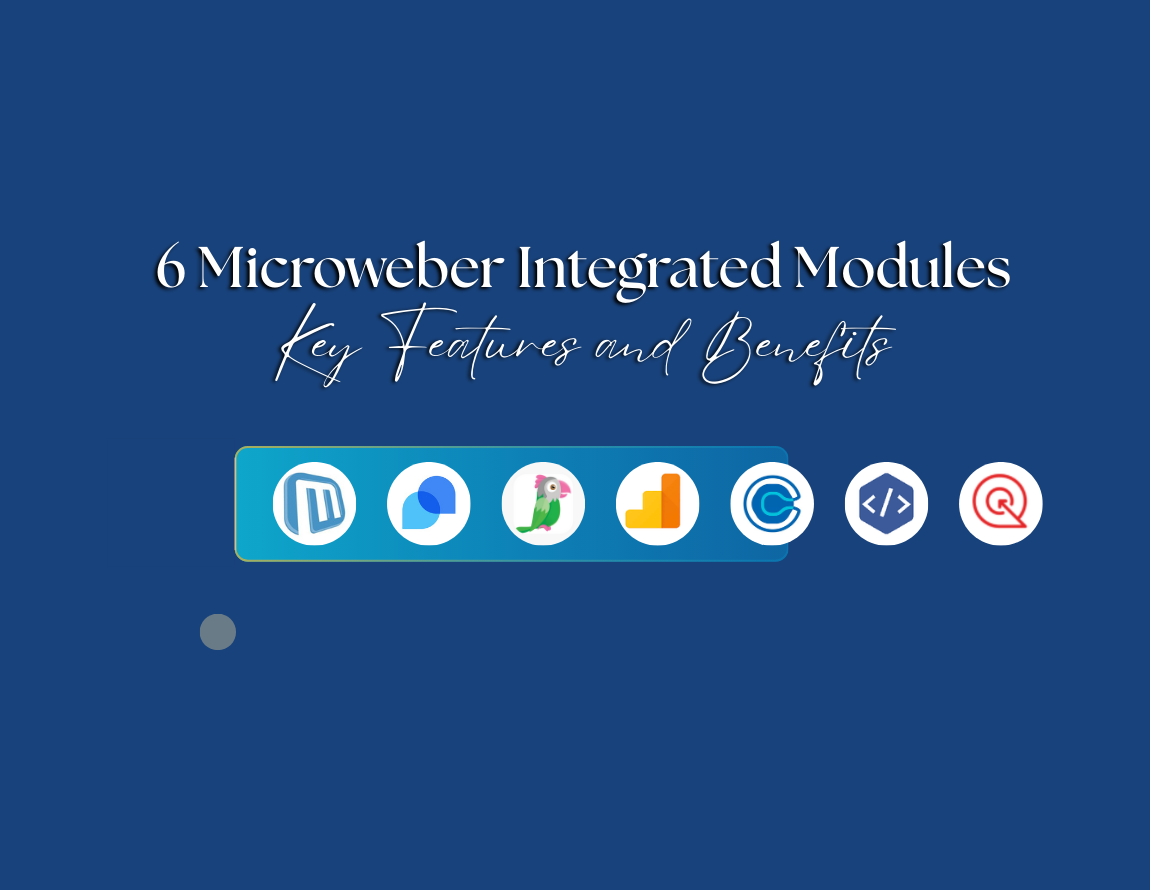Beyond Traditional CMS Open-Source with Microweber Content Manager
Posted on: April 08, 2025 Updated on: April 08, 2025 by Nada Allam The conventional approach of managing content kept the front-end and back-end of a website entirely distinct, introducing friction for users and causing delays in the production pipeline.
The conventional approach of managing content kept the front-end and back-end of a website entirely distinct, introducing friction for users and causing delays in the production pipeline.
As business owners increasingly require agility and flexibility in the production process, this model no longer meets the demands of today's content creators and developers.
Microweber Content Manager is a powerful solution that solves the issues of both environments: your team works directly in a live space to manage content without needing to shift between applications.
This results in an improved experience for the content creator allows for a more collaborative workflow and engagement, makes creators less reliant on developers to implement changes, and encourages organizations to update more frequently.
Microweber opens the door to moving past static workflows to a user-friendly content management system that is more nimble and enables team members to work faster and smarter than ever before.
Transforming Content Management
For many years now, content management systems (CMS) have produced a model that kept both frontend and backend work distinctly separate.
Although this separation worked fine for the early days of the web, it can no longer serve the needs of today's content creators and developers.
The modern digital world requires increased agility, collaboration, and efficiency.
Sadly, most traditional CMS platforms cause disorganization by surrounding users in entirely segmented workspaces.
When content authors and developers are always focused on switching from the backend dashboard to the frontend preview, all work becomes complicated, complicated, and time-consuming.
Microweber Content Manager is a response to this paradigm shift, allowing users to oversee the content process directly on the front-end, bridging both experiences and reaching an increased productivity level.
The Limitations of Conventional CMS Architectures
Conventional CMS platforms -those that have been around long before the advent of the "headless" or "decoupled" approach-, have built a very clear differentiation between the back-end (content exploitation) and the front-end (content presentation). This hampers efficiency and complicates usability.
Traditional CMS Static Workflows
Traditional CMS requires users to toggle between frontend views and backend settings, resulting in multiple steps to see and apply changes. This slows down content creation and updating.
Challenges in User Experience
Content editors and creators frequently face difficulty navigating between multiple interfaces. This gap reinforces differences in how a piece is created and how it is experienced by end users, leading to friction and decreased innovation.
You can learn more about the difference between traditional and upcoming CMS here: No-Code or Low-Code? Create Your Online Website Your Way.
Why Integration Is Key in Modern Content Management
As organizations transition to dynamic websites with real-time updating, it is apparent that integration is critical for modern content management systems (CMS).
The gap between the front-end and back-end creates friction, specifically in situations where everything is changing quickly.
Identifying the Pitfalls of Legacy CMS Systems
Legacy CMS platforms often rely on static workflows. Editors must preview changes in separate windows or use plugins to get a visual representation of their content.
These systems also struggle to handle real-time collaboration, leading to a slower, more fragmented process.
The Need for Dynamic Content Management
Nowadays, users expect instant confirmation of any alterations made to a website. Traditional CMS configurations, on the other hand, include static workflows and the need for additional manual updates in order to deliver the desired responses.
As websites become more interactive with the user experience, content management tools must also adapt to expectations for organizational agility and ease of use.
The Innovative Microweber Solution
 Microweber CMS challenges traditional design principles in the CMS world by combining front-end and back-end features.
Microweber CMS challenges traditional design principles in the CMS world by combining front-end and back-end features.
The platform eliminates the need to toggle between multiple environments by allowing inline editing directly from the front-end, and we think this is a more user-friendly experience.
Front-End Editing: Real-Time Empowerment for Content Creators
Microweber allows content creators to edit and publish content directly on the live site, with changes reflected in real-time.
The result is a highly efficient process for creating and publishing content, allowing even non-tech users to take total ownership of their site.
Backend Flexibility: Keep Control Without the Hassle
Microweber provides an easy-to-use frontend while giving developers a powerful backend that puts full control of site structure, database handling, and customizing their applications all in developers' hands.
The ability to provide straightforwardness while also providing flexibility allows technical users and nuanced tech users to work together seamlessly.
Advantages of Utilizing Microweber in Content Management
Microweber's breakthrough content management holds several benefits for teams and organizations that want to streamline their workflow.
Faster Editing Processes: Streamlining the Content Creation Cycle
In traditional CMS systems, a team could have to wait to see changes in a live setting.
Microweber's front-end editing allows users to edit content and preview all updates in real-time.
This facilitates quicker decisions and improved efficiencies within the content workflow.
User-Friendly Interface: Bridging the Gap for Non-Technical Users
Microweber is user-focused, thus allowing the non-technical user to exercise complete control over content on their website.
This means content teams get to invest time in creative response work rather than waiting for other teams outside to do further editing on their content.
Reduced Reliance on Developers
By removing the dependency on developers for everyday processes, Microweber allows content managers to perform most of the updates to the site without help.
This freedom means you can get things done quicker and helps to create a more agile development workflow.
The Importance of Microweber's Approach in Modern CMS Workflows
Microweber's ease in the integration of front and back-end functionality is important because, in today's rapid pace, businesses need to continue to adapt quickly to market needs. An effective CMS such as Microweber is critical to their success.
Boosting Efficiency: How Microweber Facilitates Agile Workflows
Microweber allows businesses to implement changes effortlessly, provides a seamless flow of work for team members, and mitigates delays in the workflow of content creation.
An agile workflow enables businesses complete projects in less time and improves productivity overall by minimizing the time updating content takes.
Improving Collaboration: Breaking Down Silos in Team Environments
Microweber makes it easy for marketing, design, and development teams to work together.
There is one shared, unified interface for all team members to create content and modify sites without having to deal with a long, winding conversation about context when dealing with several different tools.
Enhancing User Experience: Meeting the Needs of Modern Websites
In today's world, user experience is important. Microweber's instantly available interface and feedback make for a seamless experience for the content creators and the users of the site.
The system is designed to meet modern web demands that include responsive design, quick load times, and immediately available updates which allows single bodies of work to remain competitively relevant.
Worried about security when creating a website? Read Is Microweber a Secure CMS? 10 FAQs About This Open-Source Platform to know all of Microweber’s security features.
Conclusion
In the marketplace today, businesses need to be able to move from static CMS to an integrated, real-time solution.
Microweber's provisioning service provides both frontend and backend capabilities that equip creators and teams with tools to be more productive and to collaborate better.
Microweber removes impending limitations of traditional content management, keeping workflows optimized, increasing productivity, and providing better informed and faster decision-making.
Take your content management to the future today with Microweber and see how its modern features can impact your team.
Try Microweber today and see the difference for yourself!
FAQs
What is a CMS platform?
The Content Management System (CMS) is a type of software that enables users to create, manage, and modify digital content on websites, without needing technical skills.
How many websites use CMS?
More than 60% of websites, worldwide, are built on some type of CMS. Popular CMS platforms include Microweber, WordPress, Joomla, and Drupal.
Can we create a website without CMS?
Yes, websites can be developed without a CMS by coding a website from scratch, however, CMS platforms can make websites easier to develop by including templates, tools and an interface.
Is CMS user-friendly?
Modern CMS platforms, built for the user, like Microweber, are designed to be user-friendly with tools and an interface that simplifies managing a website for the non-technical user.






